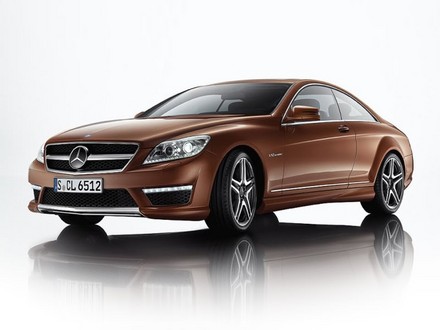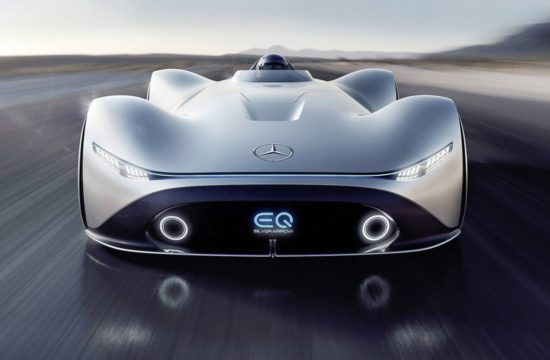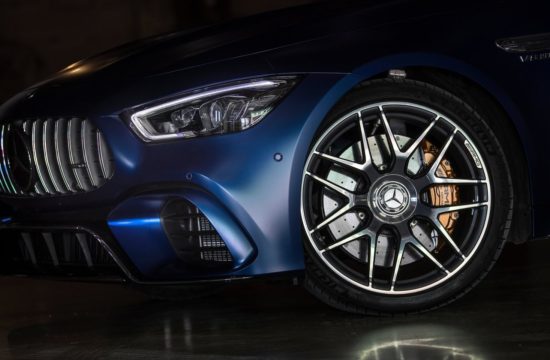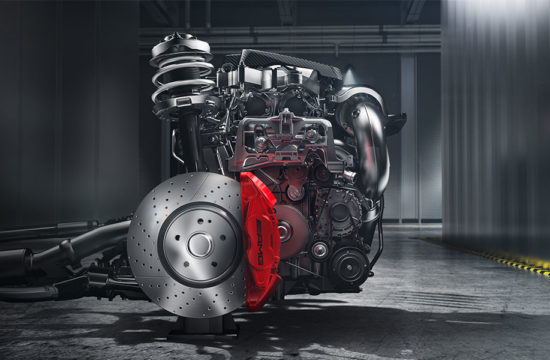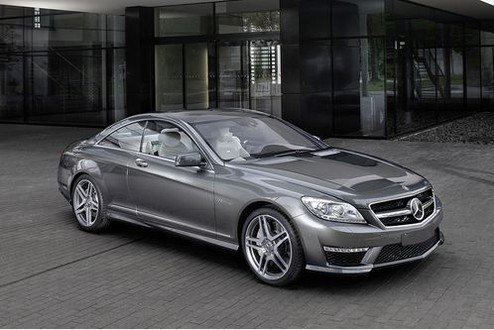
Mercedes-Benz released a bunch of official pictures of the first AMG variant of the 2011 CL-Class Facelift. As we had seen through the leaked pictures the before, the new CL63 AMG features a sleek and sporty AMG body kit to cope with the refreshed styling of the 2011 model. This design has been with us for a long while now, but it still looks nice and cool today, and can live on for another couple of years.
As we have reported earlier, the new generation of AMG-powered V8 Mercs will be getting a brand-new twin-turbo engine instead of the utterly magnificent 6.2 liter unit. So while we will miss the amazing noise of the old engine, we welcome the new one because not only it’s cleaner and lighter in fuel, it is massively powerful as well.
The new 5.5 liter BI-turbo V8 in CL63 AMG produces 536 hp and maximum torque of 590 lb-ft. That’s in normal mode, engage the AMG Performance Package and it goes up to 563 hp and 664 lb-ft. Mercedes says the new engine is 27 percent more fuel efficient and 30 percent less carbon dioxides.
That huge power turns this fairly heavy luxurious coupe which is nothing short of a personal yacht into a real performance machine. Zero to 60 mph takes only 4.4 seconds in this car while the top speed is as usual limited to 155 mph. With the AMG Performance pack, these numbers are 4.3 seconds and 186 mph (still limited!).
Mercedes has not released official pics and details of the the CL63’s bigger brother, the CL65 AMG but we know that it will be powered by the same monstrous V12 bi-turbo as before, which is tuned for more power and less emissions.
Below there’s more details info about the new 5.5 liter engine, if you are interested…

Combination of twin turbocharging and direct gasoline injection
Mercedes-AMG is presenting an attractive high-tech package with its combination of biturbo charging and direct gasoline injection with spray-guided combustion. The innovative injection technology brings distinct advantages to fuel consumption and exhaust emissions, thanks to higher thermodynamic efficiency. Particularly fast and precise piezo-electric injectors spray the fuel into the combustion chambers, ensuring a homogenous fuel/air mixture and highly effective combustion. An electric low-pressure pump delivers the fuel from the tank to a high-pressure pump in the trunk with a pressure of 87 psi. The fuel pressure in the highpressure rail is controlled between 1,500 and 3,000 psi on a fully variable and demand-related basis.
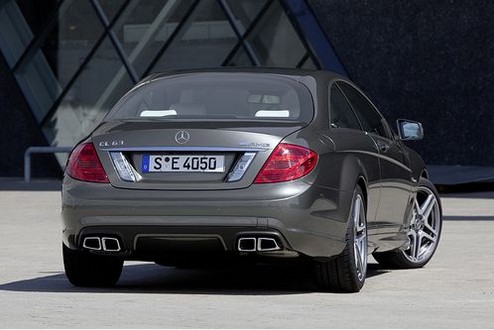
Two turbochargers and efficient air/water intercooling
Two turbochargers located next to the cylinder banks supply the eight cylinders with fresh air. At their maximum speed of 185,000 rpm under full load, the two turbochargers force 3,860 lbs into the combustion chambers per hour. The maximum charge pressure is 14.5 lbs, and 18.8 bar with the AMG Performance package. Thanks to their specific, compact construction – the turbine housings are welded to the exhaust manifold – there are significant space advantages and the catalytic converters also heat up more rapidly.
The new AMG V8 is the first turbocharged engine to dispense with the usual blow-off valve. This innovative solution enables the compressor housing to be made extremely compact. To ensure agile responsiveness with no time lag, all the air ducts in the intake tract are as short as possible. The wastegate valve, which reduces the pressure in the exhaust system during negative load changes, is vacuum-controlled via an electropneumatic converter. This allows dethrottling under partial loads, which in turn lowers the fuel consumption.
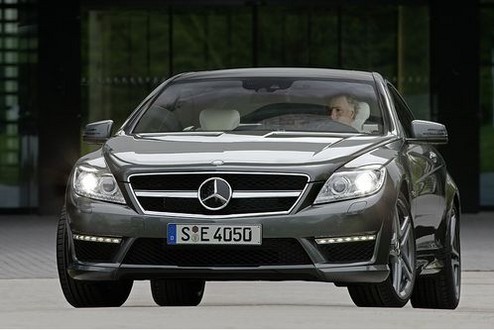
Like the existing AMG 6.0-litre V12 biturbo engine, the new eight-cylinder directinjection unit uses very efficient air/water intercooling. The low-temperature cooler with its water circulation is space-savingly accommodated within the V of the cylinder banks. It effectively cools down the intake air compressed by the turbochargers before it enters the combustion chambers, and maintains a constantly low intake temperature under full load. A large radiator at the car’s front end ensures metered cooling of the water circulating in the low-temperature circuit. This guarantees a high output and torque yield in all ambient temperatures and operating conditions.
Extremely short charge-air ducting makes for outstanding responsiveness. The stainless steel pressure pipes for the fresh and charge air are produced by the hydroforming process, have a wall thickness of only 0.03 inches and are designed for very low pressure loss.
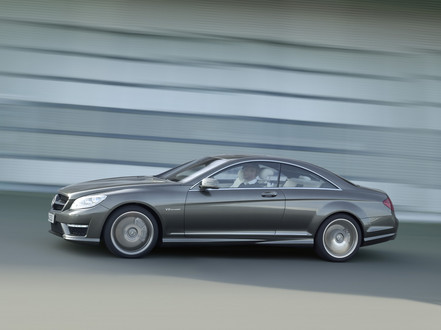
Aluminum crankcase with Silitec cylinder liners
The crankcase of the new AMG 5.5-liter V8 biturbo engine is made of diecast aluminum. The low (dry) engine weight of just 450 lbs is the result of uncompromising lightweight construction methods, and leads to the car’s very balanced weight distribution. The bearing cover for the main crankshaft bearings is of grey cast iron, and is bolted to the crankcase for high rigidity. Cast-in Silitec cylinder liners ensure that the eight pistons operate with low friction.
Drilled pulsation holes in the crankcase lead to a higher output and fuel savings under partial load: above the bearing blocks there are longitudinally drilled holes which connect adjacent crankcase cavities. Normally the upward and downward movement of the pistons causes air to be forced into and extracted from the sump, which leads to increased internal friction losses and therefore a reduction in output. The pulsation holes prevent this by ensuring effective pressure compensation between the cavities.
The forged crankshaft of high-grade 38MnS6BY steel alloy rotates in five main bearings, has eight counterweights and has been optimized with respect to torsional rigidity, inertia, low rotating masses and a long operating life. A twomass viscous damper mounted at the front reliably eliminates vibrations. Each connecting rod journal on the crankshaft carries two forged, cracked connecting rods. In the interests of low mechanical friction and high wear resistance, the lightweight pistons have a metallic contact surface. Pressure-controlled oil-spray nozzles in the crankcase ensure that the highly stressed piston crowns are efficiently cooled.
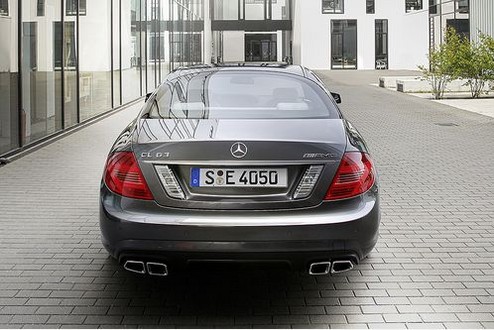
Four-valve technology with variable camshaft adjustment
Perfect charging of the combustion chambers is ensured by large intake and exhaust valves, of which there are four per cylinder. The exhaust valves, which are subject to high thermal loads, are hollow and sodium-cooled. Four overhead camshafts operate the 32 valves via low-maintenance, low-friction cam followers. The infinitely variable camshaft adjustment with a range of 40 degrees on the intake and exhaust sides depends on the engine load and engine speed, leading to outstanding output and torque values. This also results in consistent idling at a low speed.
Depending on the engine speed, valve overlap can be varied for the best possible fuel/air supply to the combustion chambers and efficient removal of the exhaust gases. The variable camshaft adjustment is carried out electromagnetically via four pivoting actuators, and is controlled by the engine control unit. The camshafts are driven by three high-performance silent chains, which have considerable advantages in noise comfort compared to cylinder roller chains.
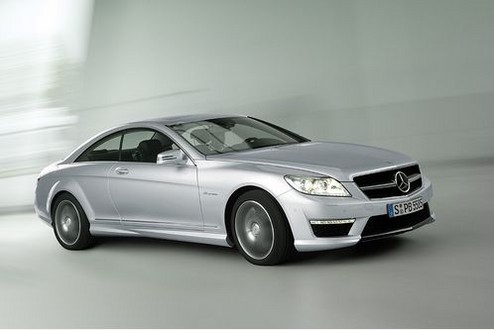
Efficient oil supply and water cooling
Efficient oil delivery under all load and operating conditions is ensured by an oil pump with an electrically controlled compression stage. The oil pressure can be varied between 29 and 48 psi, which has advantages in terms of friction and fuel consumption. An extraction stage integrated into the oil pump for the two turbochargers prevents oil from being mixed into the charge air and exhaust gases, thereby helping to reduce emissions even further. Both the sump and the extraction point have been optimized for maximum lateral acceleration and efficient lubrication. The oil capacity is 11 quarts.
The combined water/oil cooling system is a particularly innovative solution: initially the engine oil only flows through the oil/water heat exchanger. If the cooling performance of the very compact cooler is insufficient, the flow is directed through the external engine oil/air cooler by an oil thermostat. The advantage of this system is that the engine oil warms up (via hot engine coolant) more rapidly. A selectable water thermostat ensures rapid warming of the coolant when starting the engine and driving off.
The engine coolant is cooled using the particularly effective crossflow principle. There is a transverse flow of coolant through both the crankcase and the cylinder heads. Additional cooling slots in the cylinder head ensure more efficient cooling of the combustion chambers, which has advantages during combustion: it enables earlier ignition timings to be chosen without incurring the risk of knocking.
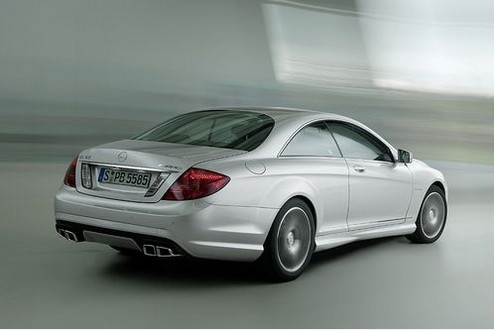
Highly efficient engine electronics for every function
All the engine functions are executed and controlled by a particularly efficient Bosch MED 17.7.3. control unit. This state-of-the-art engine computer not only controls the direct gasoline injection, charge pressure, camshaft adjustment and variable oil supply, but also communicates with all the other onboard control units. The microprocessor has more than 30,000 different parameters and functions stored in its memory, and is able to perform up to 260 million individual operations per second. To reduce the load on the engine control unit, the eight individual ignition coils have an integral electronic module known as an ignition amplifier at each cylinder. These ensure a strong ignition spark at all engine speeds and under all load conditions. Eight highvoltage powerstages are responsible for highly precise fuel distribution to the piezoelectric injectors.

Highly efficient engine electronics for every function
All the engine functions are executed and controlled by a particularly efficient Bosch MED 17.7.3. control unit. This state-of-the-art engine computer not only controls the direct gasoline injection, charge pressure, camshaft adjustment and variable oil supply, but also communicates with all the other onboard control units. The microprocessor has more than 30,000 different parameters and functions stored in its memory, and is able to perform up to 260 million individual operations per second. To reduce the load on the engine control unit, the eight individual ignition coils have an integral electronic module known as an ignition amplifier at each cylinder. These ensure a strong ignition spark at all engine speeds and under all load conditions. Eight highvoltage powerstages are responsible for highly precise fuel distribution to the piezoelectric injectors.

Twin-pipe AMG sports exhaust system for a characteristic sound signature
The twin-pipe AMG sports exhaust system has a pipe cross-section of 2.76 inches from the manifolds to the rear silencers. When designing the sound, the aim was to create a perfect synthesis of aggressiveness and the comfort on long journeys that is the hallmark of a Mercedes. The goal of the developers was to achieve an emotional experience when accelerating and rev-matching, but unobtrusiveness at constant speeds. Unpleasant frequencies or droning noises were effectively eliminated during a series of painstaking tests. The sports exhaust system emits a sonorous eight-cylinder sound that is typical of AMG, while the striking chrome twin tailpipes feature a new design.
2011 Mercedes CL65 AMG Pictures:
